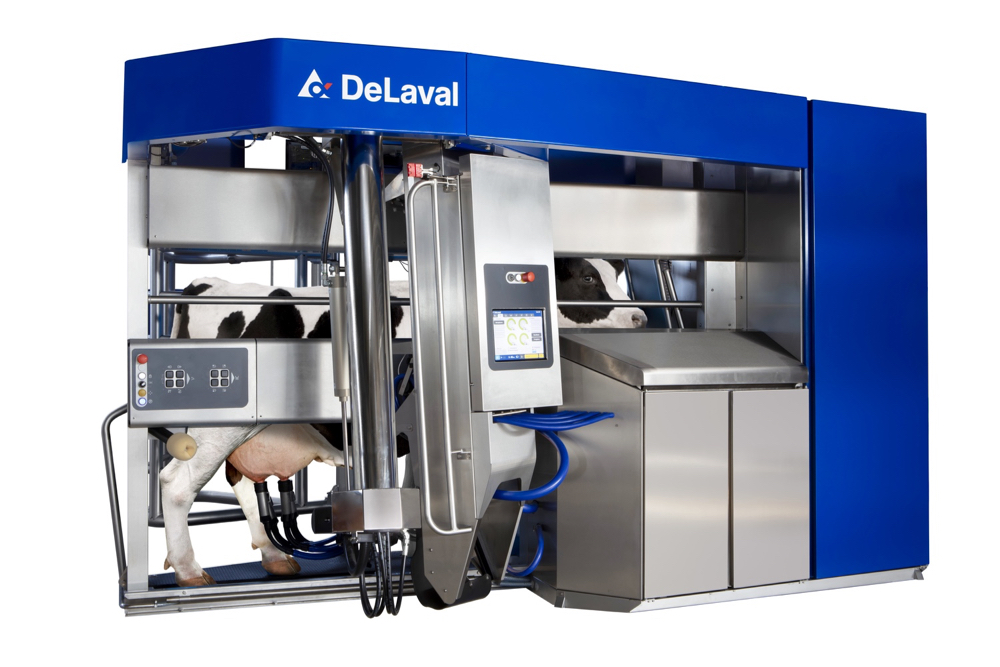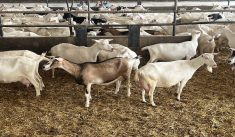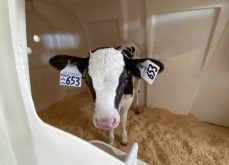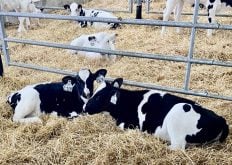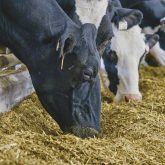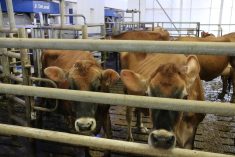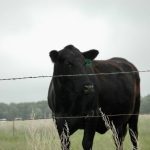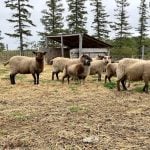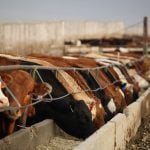DeLaval has created a simpler version of its on-farm milk-testing system, integrating pregnancy and heat monitoring in its new V310 robotic milking system.
The DeLaval VMS V310 alerts farmers when cows are coming into heat and when cows are testing as pregnant due to their progesterone levels. An algorithm determines when a cow needs to be tested automatically.
Why it matters: Reproduction is one of the largest challenges for dairy farmers for both cow longevity and costs.
The company’s Herd Navigator system has been in Canada for several years. It tests for progesterone, like the new V310 system, but also for lactate dehydrogenase (LDH), which helps detect mastitis and for beta hydroxybutyrate (BHB), which helps identify metabolic issues like ketosis.
Read Also

Canada seventh-most influential country on agri-food
Report from Dalhousie University and MNP shows Canada ranks seventh among G20 countries on agri-food influence.
“Depending on what you’re after and your needs in robotics, you may still be interested in the full package with Herd Navigator with V300, or just focus on reproduction and focus on the V310,” says Nancy Charlton, Farm Management Solutions Manager for DeLaval in North America. She’s based in Canada.
The VMS V300 is the company’s latest robotic milking system, introduced in 2018.
She says feedback from the market told the company that there was room for a reproduction-only version of its inline milk-testing system.
The first V310 is being tested at a farm in British Columbia.
The system changes how a farmer manages the herd for reproduction, especially if they’ve been synchronizing heats.
“If they’ve always been looking for natural heats, it just makes it easier. Instead of looking at who is moving more in the whole herd, there’s a daily list of cows,” says Charlton.
For small herds, that might be five cows, and 15 o 18 for large herds.
For those who have been synchronizing heats, the system will allow them to gradually stop using the shots as a way to determine heat. After a couple of months, cows will be rebred on natural heats based on measured progesterone levels.
The system allows for less intervention in the cow’s lives and reduces hormone use on the farm.
Charlton says that farmers have usually made up their minds to move in that direction when they decide to purchase the system.
An in-line testing system requires some extra work by farmers and cost in testing supplies.
The system holds about 400 progesterone testing sticks so it needs to be refilled every month or month and a half.




